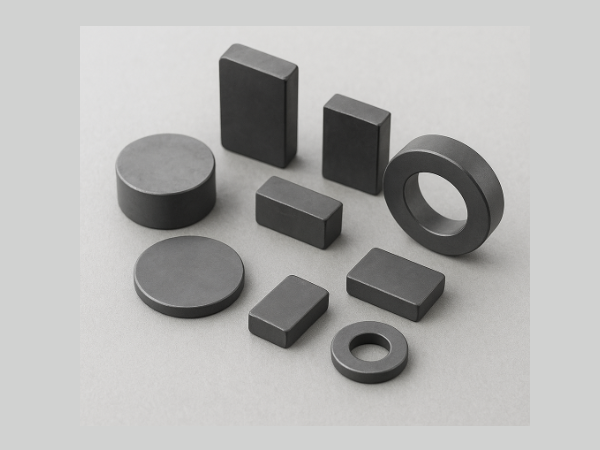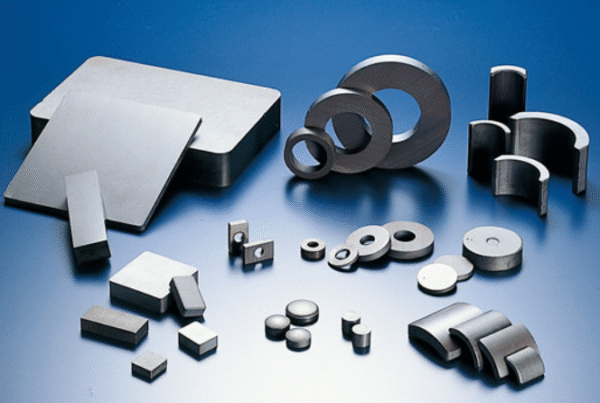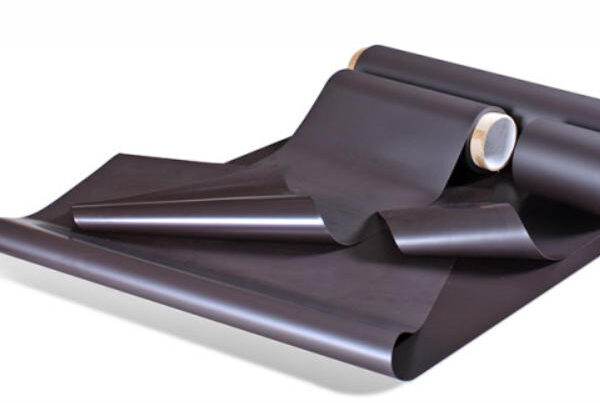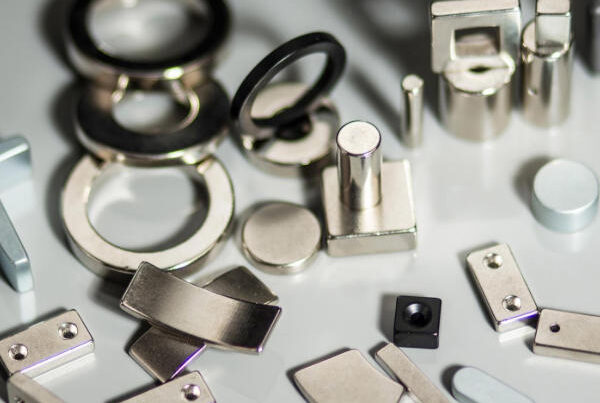In the 3C industry—computers, communications, and consumer electronics—magnetic components play a vital role in ensuring device performance. From smartphone speaker magnets, wireless charging modules, and camera autofocus motors, to laptop Hall sensors and magnetic connectors, 3C magnetic assemblies are everywhere. As products evolve toward being thinner, more powerful, and more stable, the manufacturing process of 3C magnetic components is moving toward high precision, automation, and intelligent production.
1. High-Quality Materials: The Foundation of Precision
The performance of any magnetic component starts with its material. Common 3C magnet materials include NdFeB (neodymium–iron–boron), SmCo (samarium–cobalt), ferrite, and soft magnetic alloys. NdFeB magnets are widely used in high-end electronics due to their high magnetic energy, compact size, and strong magnetic fields.
Most magnetic materials are made through powder metallurgy. The uniformity, purity, and dispersion of the powder particles directly determine the final magnetic performance and dimensional accuracy. Manufacturers use surface coating, vacuum melting, and precise sieving technologies to ensure high-quality powder characteristics.
During pressing, a directional magnetic field is applied to align magnetic particles, forming the desired magnetic orientation. Mold design is critical here, requiring uniform pressure, smooth cavity surfaces, and easy demolding to maintain tight tolerances.
2. Sintering and Heat Treatment: Enhancing Structure and Performance
After pressing, the compacted magnet (known as the “green body”) has low density and must undergo high-temperature sintering—typically above 1000 °C—in a vacuum or inert atmosphere to prevent oxidation. This process allows particles to bond through diffusion, forming a stable crystalline structure that improves both mechanical strength and magnetic properties.
Subsequent annealing or aging treatments remove internal stresses, refine grain boundaries, and enhance magnetic uniformity. For high-end applications, grain boundary diffusion further increases remanence and coercivity while minimizing performance variation.
3. Precision Machining: Controlling Dimensions and Magnetic Direction
Sintered magnets often require secondary machining to achieve the design’s exact dimensions and geometry. Techniques include grinding, lapping, wire cutting, EDM, and laser cutting. High-precision 3C magnetic assemblies can reach dimensional tolerances within ±0.01 mm.
Since NdFeB and similar materials are brittle, machining must carefully control cutting depth, feed rate, and coolant temperature to avoid cracks or chipping. For micro or complex components, laser micromachining and chemical etching provide superior detail accuracy.
In precision assembly, magnets are integrated with metal, plastic, or flexible circuits through automated dispensing, hot pressing, or welding. Adhesive layer thickness and positioning accuracy are controlled at the micron level to ensure magnetic field consistency.
4. Magnetization and Magnetic Field Calibration: Defining Core Performance
After machining, magnets are not yet magnetic. They are energized using magnetization equipment that applies strong magnetic fields to achieve the designed remanence (Br) and coercivity (Hc). Depending on the application, the magnetization method may be overall, segmented, or directional.
For miniature 3C magnetic components, custom coils and magnetic shielding prevent interference and leakage. Post-magnetization, magnetic field scanners or Hall probes are used to map magnetic distribution. Any field deviation or uneven strength can be corrected through re-magnetization or demagnetization—critical for autofocus motors and Hall sensors.
5. Surface Treatment and Protection
To prevent corrosion and oxidation, magnets receive protective coatings such as nickel (Ni), zinc (Zn), copper (Cu), phosphate, or epoxy resin. In 3C products, coatings must not only resist rust but also maintain smooth appearance and strong adhesion. Vacuum coating or epoxy encapsulation improves moisture and heat resistance.
During assembly, automated dispensing and vacuum curing reduce air bubbles and improve bond strength. Laser welding is increasingly used for high-strength joining between magnets and metal components.
6. Automation and Smart Manufacturing
To ensure consistency in mass production, 3C magnetic assembly manufacturing is rapidly adopting automation and smart production lines. Automated feeding, vision-guided positioning, robotic assembly, online magnetization, and real-time inspection minimize human error.
In smart factories, MES systems monitor temperature, pressure, tool wear, and adhesive quantity in real time, achieving closed-loop control. This intelligent manufacturing process enhances precision, traceability, and stability across the entire production line.
7. Testing and Quality Control
High-precision magnetic assemblies undergo strict testing before shipment:
- Dimensional accuracy: Measured using coordinate measuring machines (CMMs) for concentricity, flatness, and angular deviation.
- Magnetic performance: Testing remanence (Br), coercivity (Hc), and maximum energy product (BHmax)
- Magnetic field distribution: Evaluated using fluxmeters or magnetic scanners.
- Reliability: Environmental tests for temperature cycling, salt spray, vibration, and aging.
All testing data feed back into process optimization and equipment maintenance, forming a closed-loop quality control system that guarantees precision and reliability.
In summary,the high-precision production of 3C magnetic components is a synthesis of materials science, precision manufacturing, and automation engineering. Every stage—from powder selection, compaction, sintering, and heat treatment to magnetization and automated inspection—directly affects the final performance.
Only with stable materials, controlled processes, and rigorous testing can true high-precision magnetic component mass production be achieved. As artificial intelligence and micro-nano manufacturing continue to evolve, the manufacturing accuracy of 3C magnetic assemblies will reach new levels, providing stronger support for the next generation of electronic devices.





